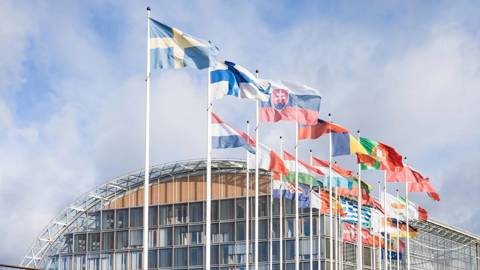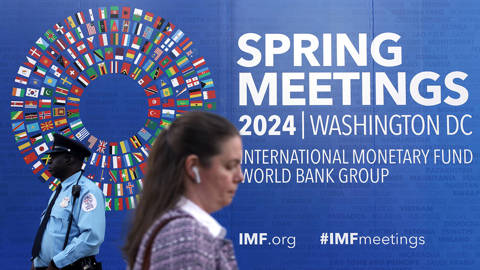Have you ever sat at the deathbed of a statistical life? “Statistical lives” are what politicians save, or let die, or kill, when they decide on resource allocations for health care.
Health care is not the only area where political decisions are matters of life and death. Environmental programs to reduce air pollution, educational efforts to publicize the adverse effects of smoking, traffic measures that lower the risk of car accidents: many policies save lives – and omit other lives that would have been saved if the money had been spent otherwise.
So, if you have ever sat at somebody’s deathbed, the answer may very well be yes: you sat at the deathbed of a statistical life.
Even so, we say that John died from cancer, not that he died from a policy decision to stop payment for cancer screening. We say that Mary died in a car accident, not that she was a casualty of the Road Traffic Act. In short, we do not usually identify policy decisions as the causes of individual deaths.
This would be quite different if the identities of future victims were known at the time such decisions are taken. Imagine that they were known, and that the individual victims of policy decisions would somehow stare into the faces of decision makers just as if they were being held at gunpoint. Policy making, I am sure, would suddenly halt.
In fact, the analogy of holding victims at gunpoint is misleading, because in public decision-making we can hardly claim that everything is all right as long as we don’t pull the trigger. Given that everything that happens is somehow a consequence of decision-making, the distinction between killing someone and letting her die is unconvincing. So perhaps decision makers, faced with the victims of previous policies and the future victims of current ones, would simply be happy that at last they could allocate resources in an optimally efficient way.
That seems unlikely. Indeed, the thought experiment of turning statistical lives into identifiable lives highlights an important point about policy-making: much, if not all, of the appeal of “efficient” resource allocation depends on the anonymity of the victims. Full anonymity explains why efficiency rules – say, leaving the most “expensive” patients untreated when resources are scarce – meet with no protest.
Such anonymity also holds for those who are left untreated in “triage” – the sorting of casualties when natural or man-made disasters strike. But, for the same reason, efficiency rules often do meet with protest when they are used or proposed for rationing medical services in everyday medicine. It is part of the everyday life of many citizens – even part of their identities – that they suffer from an expensive health problem. Under an efficiency regime, they might as well bear a target on their foreheads.
What about young and healthy citizens? Many will develop expensive health problems in the future. But their future is unknown, as is the fate of future disaster victims. Why should they not fully embrace efficient resource allocation? Many statistical lives – your own, perhaps – could be saved by excluding future payment for some expensive medical treatment (say, hemodialysis) for those who are now healthy and reallocating the funds to cheap but effective prevention programs. Since there is no fairness problem here, would it not simply be irrational to reject efficiency? After all, saving statistical lives does save individuals.
Whether or not you see a distinction between statistical lives and individual lives depends on whether you accord value not only to when you die, but also to how you die. Dying is hard. But it is our fate as humans, and it is usually accepted with dignity when the hour comes. Nevertheless, as long as we see a chance to escape death, we run from it, and we expect those who take care of us to look for the escape routes.
So here is a difference: when you die from lack of medical care, there is an escape route. It is clearly marked, but nobody helps you get to it. They stand idly by, abandoning you to death. By contrast, when you die from the absence of prevention policies, you may be dying sooner than you otherwise would, but you are not being left to die. This is why sitting beside, and even lying on, the deathbed of a statistical life may be more tolerable after all.
Perhaps a maximally extended life expectancy is of higher value to you than living in a society where doctors do not leave curable patients to die if they cannot pay for the required treatment out of their own pockets. But there is nothing irrational in deciding otherwise. It all depends on a value judgment – one of the many value judgments societies must make with respect to modern medicine. The higher the technical capabilities, and the costs, of modern medicine become, the more contested this particular value judgment will be.










Have you ever sat at the deathbed of a statistical life? “Statistical lives” are what politicians save, or let die, or kill, when they decide on resource allocations for health care.
Health care is not the only area where political decisions are matters of life and death. Environmental programs to reduce air pollution, educational efforts to publicize the adverse effects of smoking, traffic measures that lower the risk of car accidents: many policies save lives – and omit other lives that would have been saved if the money had been spent otherwise.
So, if you have ever sat at somebody’s deathbed, the answer may very well be yes: you sat at the deathbed of a statistical life.
Even so, we say that John died from cancer, not that he died from a policy decision to stop payment for cancer screening. We say that Mary died in a car accident, not that she was a casualty of the Road Traffic Act. In short, we do not usually identify policy decisions as the causes of individual deaths.
This would be quite different if the identities of future victims were known at the time such decisions are taken. Imagine that they were known, and that the individual victims of policy decisions would somehow stare into the faces of decision makers just as if they were being held at gunpoint. Policy making, I am sure, would suddenly halt.
In fact, the analogy of holding victims at gunpoint is misleading, because in public decision-making we can hardly claim that everything is all right as long as we don’t pull the trigger. Given that everything that happens is somehow a consequence of decision-making, the distinction between killing someone and letting her die is unconvincing. So perhaps decision makers, faced with the victims of previous policies and the future victims of current ones, would simply be happy that at last they could allocate resources in an optimally efficient way.
SPRING SALE: Save 40% on all new Digital or Digital Plus subscriptions
Subscribe now to gain greater access to Project Syndicate – including every commentary and our entire On Point suite of subscriber-exclusive content – starting at just $49.99.
Subscribe Now
That seems unlikely. Indeed, the thought experiment of turning statistical lives into identifiable lives highlights an important point about policy-making: much, if not all, of the appeal of “efficient” resource allocation depends on the anonymity of the victims. Full anonymity explains why efficiency rules – say, leaving the most “expensive” patients untreated when resources are scarce – meet with no protest.
Such anonymity also holds for those who are left untreated in “triage” – the sorting of casualties when natural or man-made disasters strike. But, for the same reason, efficiency rules often do meet with protest when they are used or proposed for rationing medical services in everyday medicine. It is part of the everyday life of many citizens – even part of their identities – that they suffer from an expensive health problem. Under an efficiency regime, they might as well bear a target on their foreheads.
What about young and healthy citizens? Many will develop expensive health problems in the future. But their future is unknown, as is the fate of future disaster victims. Why should they not fully embrace efficient resource allocation? Many statistical lives – your own, perhaps – could be saved by excluding future payment for some expensive medical treatment (say, hemodialysis) for those who are now healthy and reallocating the funds to cheap but effective prevention programs. Since there is no fairness problem here, would it not simply be irrational to reject efficiency? After all, saving statistical lives does save individuals.
Whether or not you see a distinction between statistical lives and individual lives depends on whether you accord value not only to when you die, but also to how you die. Dying is hard. But it is our fate as humans, and it is usually accepted with dignity when the hour comes. Nevertheless, as long as we see a chance to escape death, we run from it, and we expect those who take care of us to look for the escape routes.
So here is a difference: when you die from lack of medical care, there is an escape route. It is clearly marked, but nobody helps you get to it. They stand idly by, abandoning you to death. By contrast, when you die from the absence of prevention policies, you may be dying sooner than you otherwise would, but you are not being left to die. This is why sitting beside, and even lying on, the deathbed of a statistical life may be more tolerable after all.
Perhaps a maximally extended life expectancy is of higher value to you than living in a society where doctors do not leave curable patients to die if they cannot pay for the required treatment out of their own pockets. But there is nothing irrational in deciding otherwise. It all depends on a value judgment – one of the many value judgments societies must make with respect to modern medicine. The higher the technical capabilities, and the costs, of modern medicine become, the more contested this particular value judgment will be.